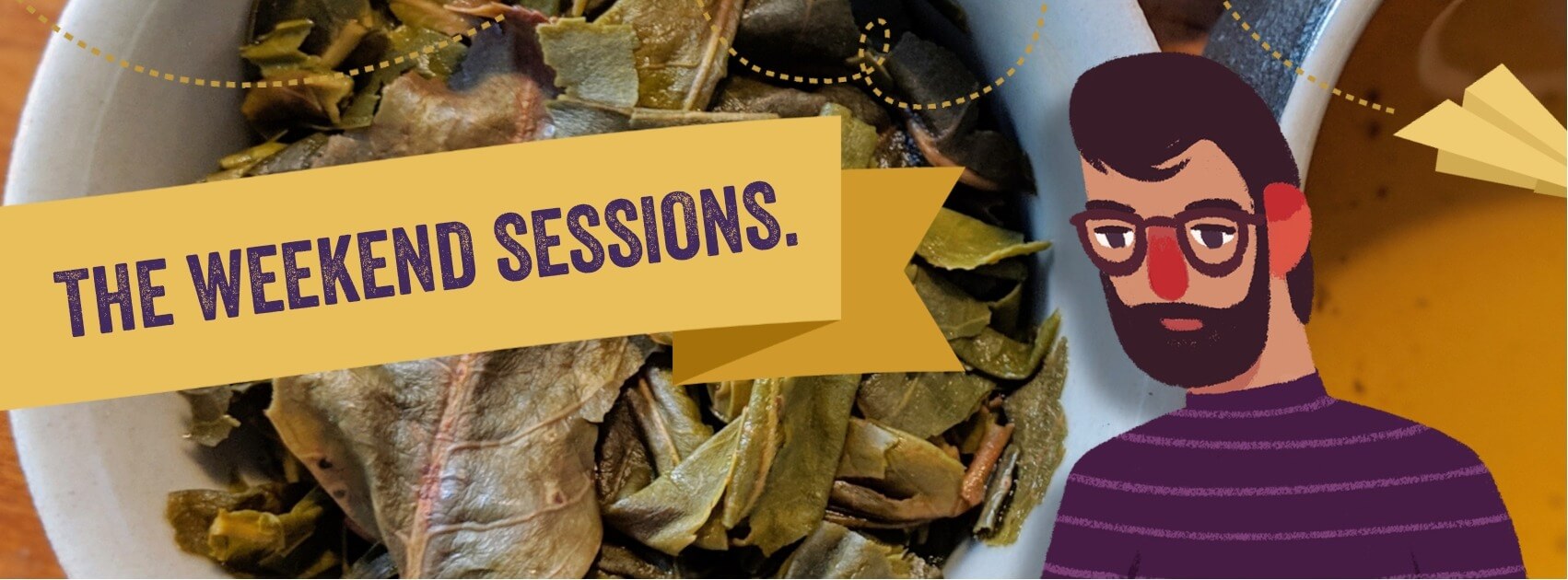Yunnan Sourcing’s 2013 Yong De Blue Label is a ripe puerh made from (as Yunnan Sourcing says) high quality material from Yong De county. This cake is made with mostly small grade leaves, as well as a good amount of gong ting, which was described to me by a tea friend as “leaves smaller than the grading system goes down to”. This should make for an interesting tea that brews up quickly but likely is lacking in stamina.
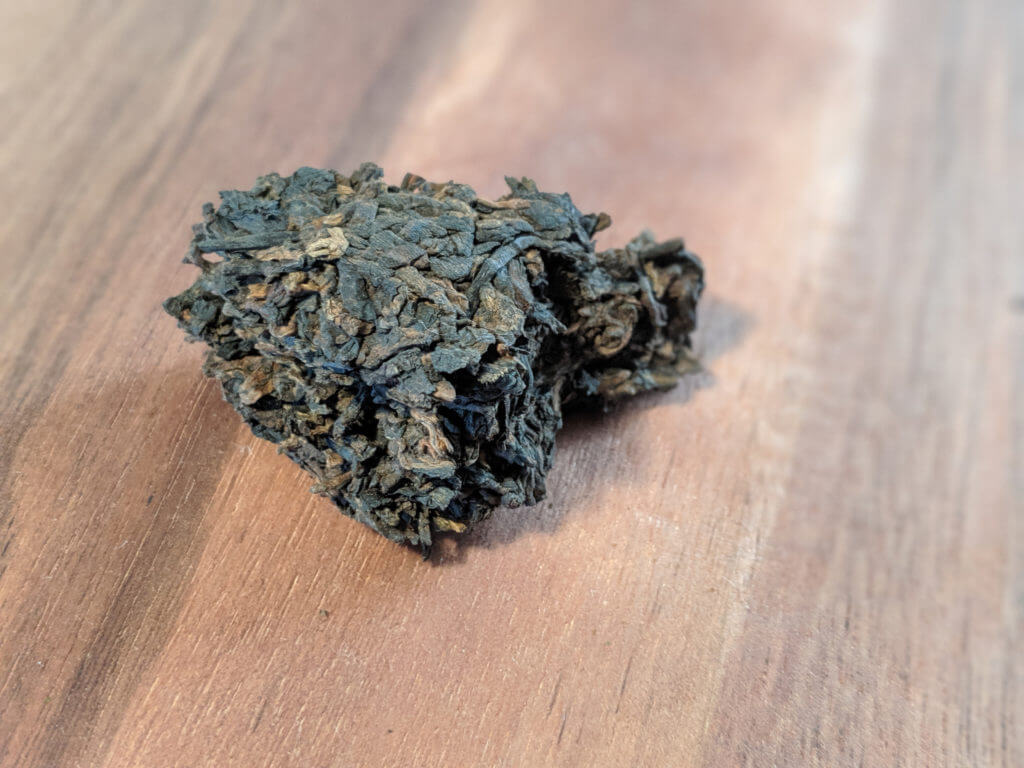
Initial Impressions
The sample I’ve got seems to be very tightly compressed, but it also looks to be the beeng hole so I can’t say how the rest of the cake would be. The dry leaves smell… well… like shou. Don’t judge shou by the smell of the leaves. My wife’s comment was “that smells like fish food,” and I think I would probably be wrong to disagree with her. I also brought the sample over to my mother to see if she was interested in trying it, but she was also put off. I would say it’s an acquired scent at best. After a rinse it starts to become much more palatable and takes on a warm, rich aroma with notes of oak, molasses and camphor. There is also a bit more funk and fishiness in there than I was expecting.
I am brewing 3.5 grams in my 55ml gaiwan with water just off a boil, and after two rinses I start the session with a 5 second infusion then increase by 5 each steep.
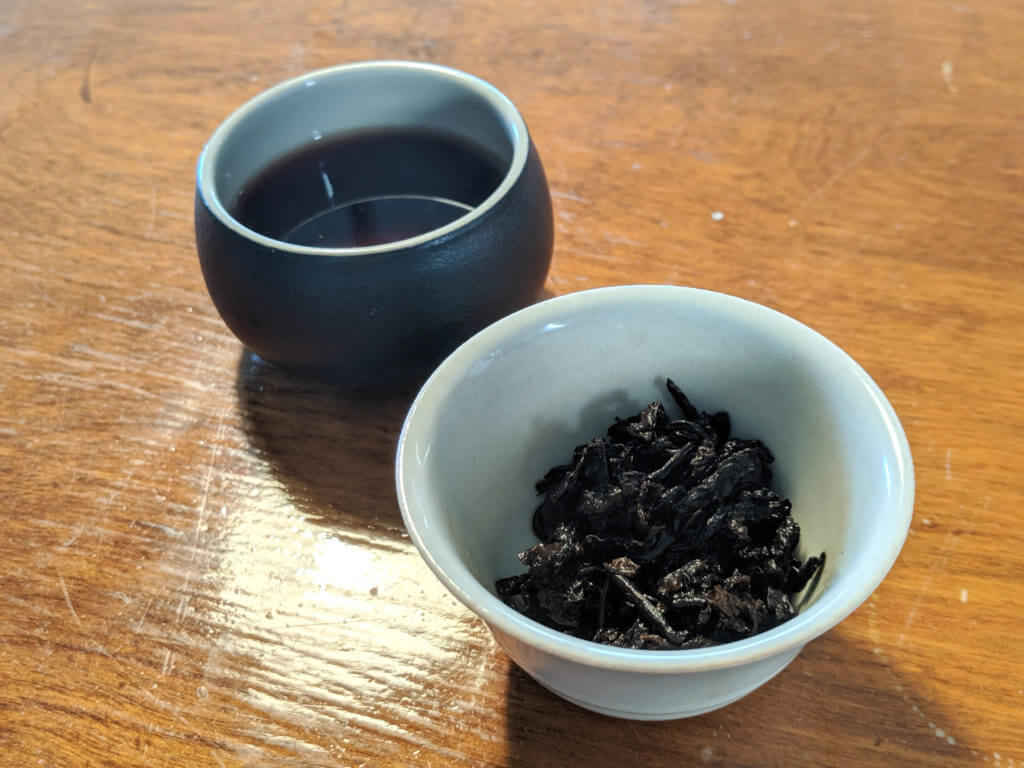
Infusions 1-3
I initially gave the tea one rinse and was going to start my session, but my first sip was overwhelmingly fishy in taste, so I discarded that as a second rinse and tried again. This undesirable flavour was still slightly present in the first infusion, but completely gone by the second. The taste is mostly sweet and is balanced nicely by a little bitterness, sort of reminding me of bakers chocolate. There is also notes of molasses, camphor and some rocky mineral-ness in the background. The aftertaste is odd in that it’s inconsistent. Sometimes I’ll take a sip and it leaves me immediately, other times I get a super long lasting sweetness. The texture is pleasing and silky smooth, but it is thin. The colour right off the first infusion is dark and inky purple that almost gets to black territory.
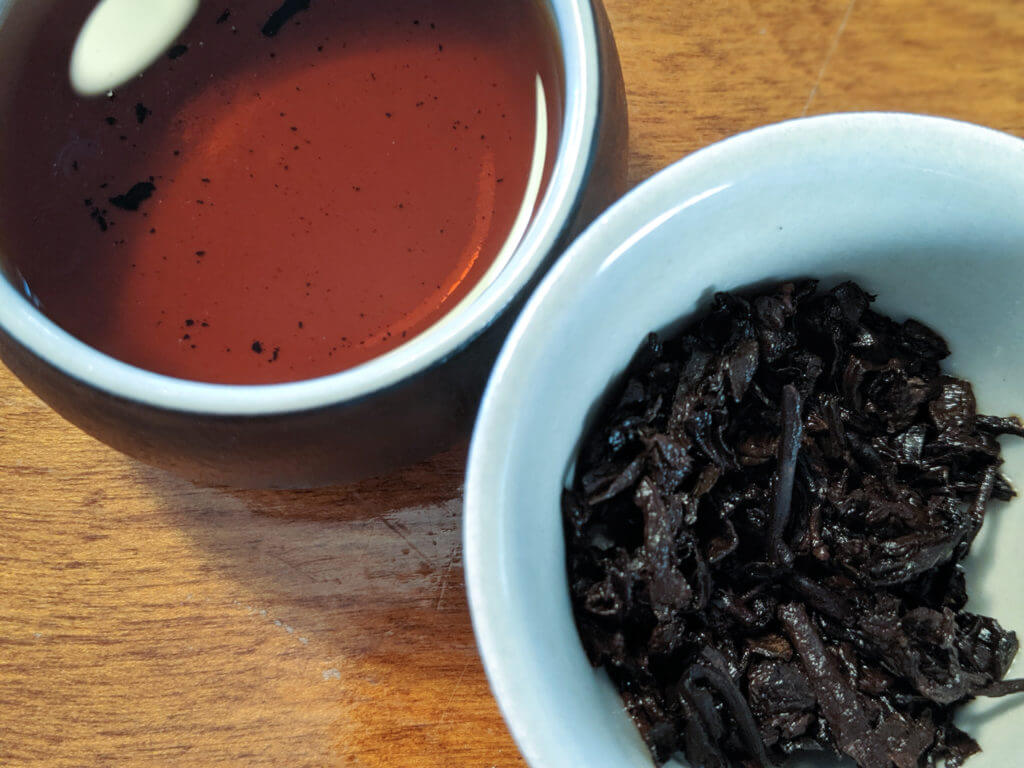
Infusions 4-6
The middle section is marked by an increased sweetness and the tea moves into more of a peaty and mossy flavour. It’s not at a full blown, dripping wet forest floor taste, but it has hints of that. I am getting the shou flavours that I like – the damp wood and mossy stuff, but it’s missing out on the mushroom taste that I’ve never been a fan of. The colour has started to lighten up significantly and is now a amber that looks a bit like a weakly brewed light roast coffee. The already thin mouthfeel seems to have peaked at the fourth infusion and is pretty water-like by the sixth. The aroma is fantastic. It’s not a massive “fill the room” tea, but it’s warm and comforting.
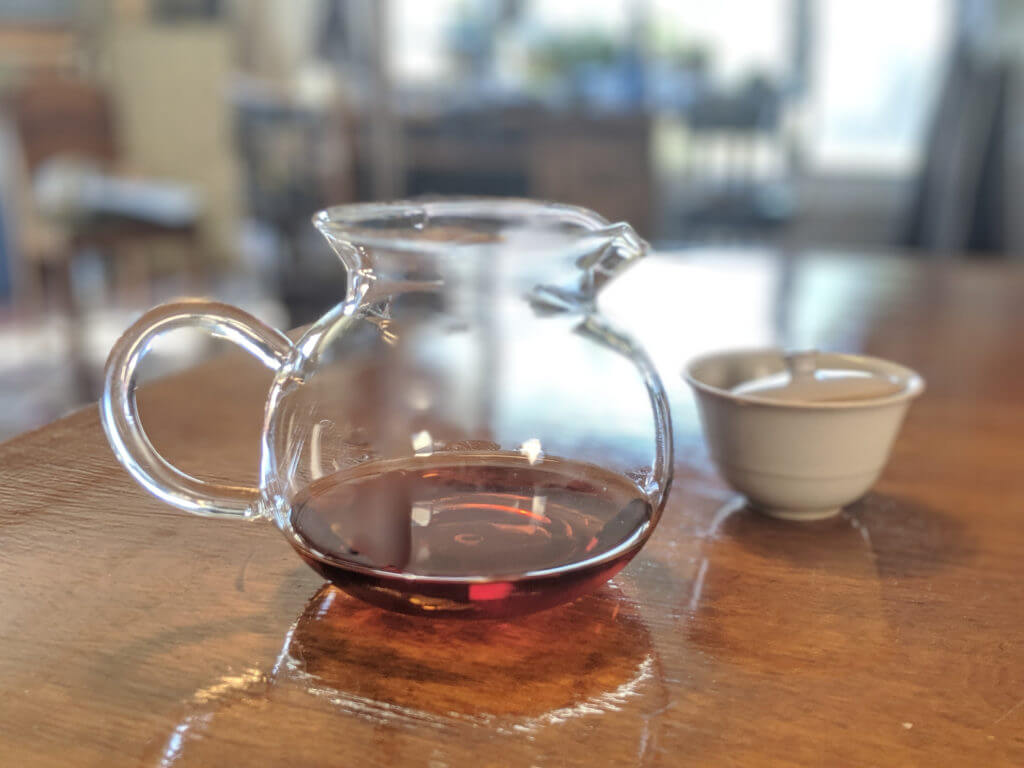
Infusions 7-9
From the seventh to the ninth infusion the taste fades out, not much changing from the mid section. At the ninth infusion I had to end my session and do some running around, but the tea leaves had given all they were going give anyway. Later in the day I came back and did a five and ten minute infusion, but even with the long length there wasn’t much there.
Final Thoughts
After my session I went to see if I could find some reviews and see what other people thought about this tea and I came across a TeaDB video on the 2012 pressing. James seems to really like it, but he mentions that it was $17 USD for a cake. Four years later and both of these cakes are in the $40 range ($42 for this 2013 pressing and the 2012 is sold out but was last at $38). At $17 for this cake I would have been over the moon and likely stocked up on a few of them. But in my opinion, $42 is pushing the limit of it’s value, as there is no shortage of great shou around the same price or less. Still, this puerh might be your jam, so if you’re curious about it I’d recommend jumping on a sample or a cake before the price increases again.
